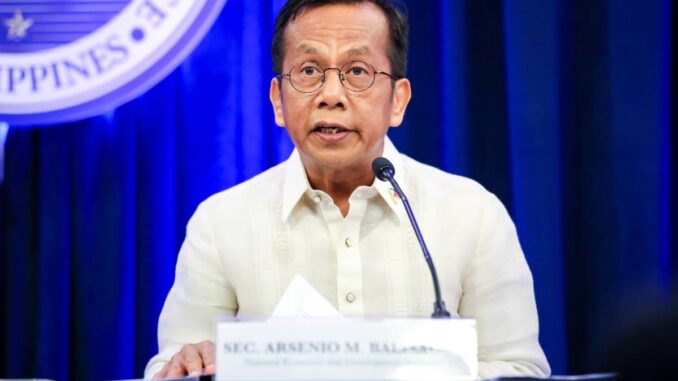
ECONOMIC growth will likely improve in the last three months of the year due to robust spending and stable prices, a Cabinet official said on Friday.
“We remain optimistic about the fourth-quarter (Q4) economic performance,” Socioeconomic Planning Secretary Arsenio Balisacan told reporters.
“Holiday spending, more stable commodity prices and a robust remittance inflow and labor market give us confidence that our 6.0 to 7.0 percent growth target is still achievable.”
Gross domestic product growth markedly slowed in the third quarter, to 5.2 percent from 6.4 percent three months earlier, putting the 2024 target at risk.
The October-December result will have to be 6.6 percent — the highest in two years — for the full-year average to hit the lower end goal of 6.0 percent.
Balisacan said that “even if we grow for the whole year … [by] 5.9 or 6.0, or 6.1 [percent], that’s still a very respectable growth for the Philippines compared to most emerging countries’ economies in the world.”
He reiterated that the year’s target remained within reach, saying that “the combination of a lower policy rate and lower inflation, stable prices, continuing robust market … that will put us to what we are targeting for the year, even if it’s just at the low end.”
Balisacan, who heads the National Economic and Development Planning Authority (NEDA), said that government interventions and a comprehensive tariff review were helping to keep prices stable.
Continuous monitoring is still needed, however, particularly with regard to rice — “the main driver of inflation” — for which prices remain high.
Consumer price growth rose to 2.3 percent in October, up from 1.9 percent a month earlier, but still within the 2.0- to 4.0-percent target.
Within-target inflation has allowed the Bangko Sentral ng Pilipinas to lower key interest rates twice so far this year. It is widely expected to cap the year with another rate cut next month.
The rate cuts, Balisacan said, “will support economic growth by making borrowing more affordable for businesses and consumers.”
The NEDA chief, however, flagged potential risks from geopolitical disputes and external uncertainties.
“Many of the external risks we consider stem from geopolitical tensions, big power rivalry and uncertainty arising from the political-economy dynamics within and between the country’s major trading partners such as the United States,” he said.
Noting US President-elect Donald Trump’s threat to raise tariffs on all imports, Balisacan said the Philippines was “ready to work with any economy and to adjust our policies accordingly.”
He earlier said that the country was preparing for any adverse economic impact from US protectionism via a push to expand in other markets.
The US is currently the top destination of Philippine exports.


Be the first to comment